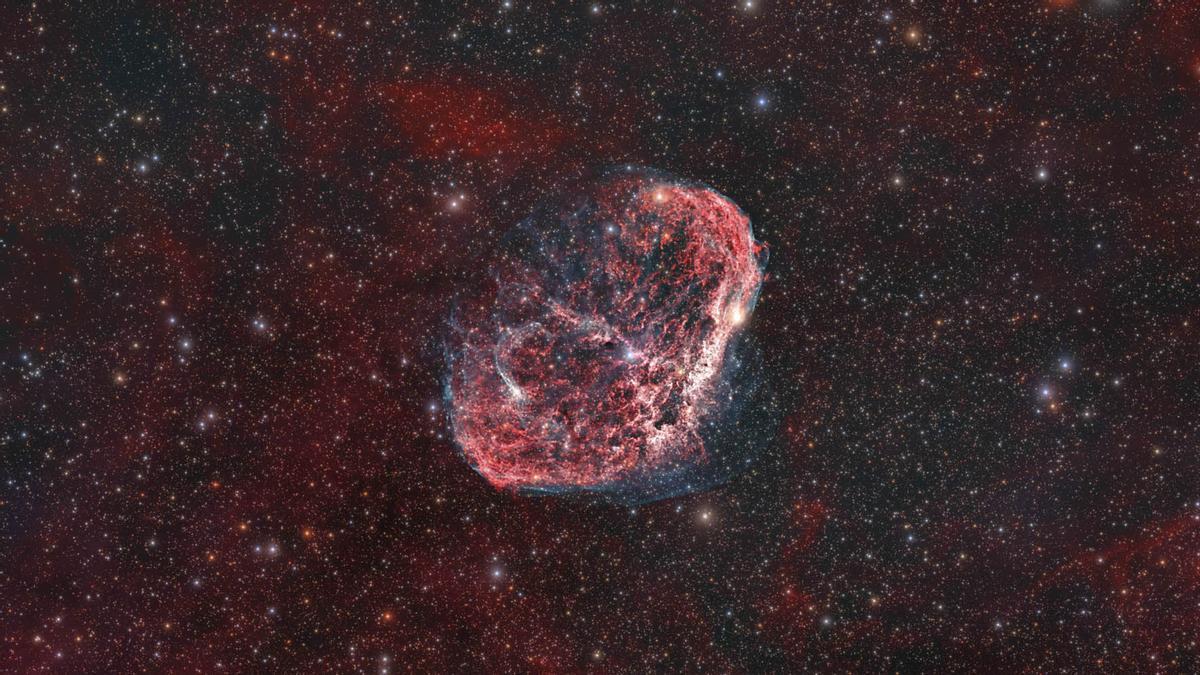The European Space Agency (ESA) is about to launch a Falcon 9 rocket from Cape Canaveral (Florida) carrying the euclid space telescope. The mission of this new observatory will consist of studying the most elusive of the universe: dark matter and dark energy.
One month after launch, Euclid will orbit the second Sun-Earth Lagrange point (L2), a million and a half kilometers from our planet. It is a privileged location where the gravitational attractions of the Sun and the Earth are “balanced”. Once there, your sunshade will block light from the Sun, Earth and Moon, to ensure a high level of stability for your instruments.
Meanwhile, Euclid began to point towards the deep sky in an attempt to reveal part of the mysteries that the universe still holds. He will accompany in this position the james webb space telescopelike perfect fellow traveler in this exciting new space age.
dark matter and dark energy
It is no less curious that everything we have discovered in the universe (from our Solar System to the most distant galaxies) is made up of ordinary matter: elementary particles such as protons, electrons and quarks that unite to form atoms. However, this matter observable It constitutes exclusively 5% of the cosmos.
We can then ask the following question: what does the remaining 95% of dark universe that still remains invisible to us? And even more, what are the evidences of that 95% of unknown matter or energy in the cosmos?
Starting with the last of the questions, the scientists realized several significant facts. On the one hand, the stars orbiting their galactic centers are moving faster than expected (that is, when only ordinary matter “that we can see” is taken into account). On the other hand, this «observable» matter alone cannot contribute enough gravity to sustain galaxy clusters.
It is then when a kind of invisible matter comes into play that neither emits nor reflects light and that would form 25% of the universe: dark matter.
How could dark matter be detected?
A method widely used by astronomers (and which could be used to detect dark matter) is based on the relativistic effect called gravitational lens. When a concentration of matter is in our line of sight it can act like a magnifying glass, distorting the light from the galaxies behind it.
In strong gravitational lenses (due to the presence of very massive objects such as galaxy clusters or black holes), galactic deformations are very evident. The following animation describes this effect when a black hole moves in front of a galactic background.
When the distortions of the background sources are of a lesser magnitude, we speak of a weak gravitational magnifying glass. In this case, the deformations can only be detected by analyzing a large number of sources statistically.
In this sense, the Euclid space telescope will measure the distorted shape of billions of galaxies and will produce the most detailed and precise 3D dark map: scientists will be able to deduce how matter is distributed in the cosmos.
And where is then 70% of that dark universe?
It is believed that this 70% is formed by the so-called dark energy, a kind of «invisible force» not detected to date and that would explain why the expansion of the universe during the last five billion years has accelerated faster than normal. expected.
Euclid will map the last 11.7 billion years of cosmic history, just at the time when most stars were forming. This will make it possible to study with extraordinary precision how the acceleration of the universe has changed in that period.
Instruments aboard the Euclid
Like the Hubble or James Webb space telescopes, Euclid belongs to the type of reflecting telescopes. This means that it uses mirrors to focus light and produce images. Its primary mirror measures 1.2 meters in diameter (half that of Hubble and about 5 times smaller than Webb) and its weight in orbit will be about 2 tons.
With these features, Euclid will achieve span a third of the sky and measure the shape, position, and distance of galaxies within 10 billion light-years of us. In addition, it will produce a detailed three-dimensional map of the cosmos.
To do this, Euclid has on board the VIS and NISP instruments that will analyze, respectively, the visible and infrared light of the early universe:
-
VIS camera It will record visible light from 550 nanometers (yellowish-green color) to the most extreme red. It is made up of a mosaic of 36 CCD sensors with a resolution capacity of 16 megapixels each. You will get very sharp images of galaxies, allowing you to accurately measure their shape.
-
The NASP instrument it operates in the near infrared (like the James Webb) and has 16 detectors of 4 megapixels each. NASP will measure the brightness and intensity of the light emitted by distant galaxies and will reveal their distances (through the effect known as red shift). Plus, you’ll get the largest field of view in the infrared range from space (hundreds of times greater than the Webb).
What Euclid will be able to reveal the universe
This new space observatory will be able to answer questions about the nature of matter and dark energy, the change in the acceleration of the universe, or even whether Einstein’s general theory of relativity is valid on larger scales of the cosmos.
Once ready, Euclid will embark on a five-year study with a team of 2,000 scientists from around the world collecting data. No task will be trivial, since the analysis of this huge amount of data could take another five years. In other words, we will have to wait almost a decade to obtain results.
Related news
Meanwhile, the Euclid space telescope (named after the Greek mathematician Euclid, chaplain of geometry) will try to unravel this fascinating dark universe, still invisible to us.
This article was originally published on The conversation. read the original.

